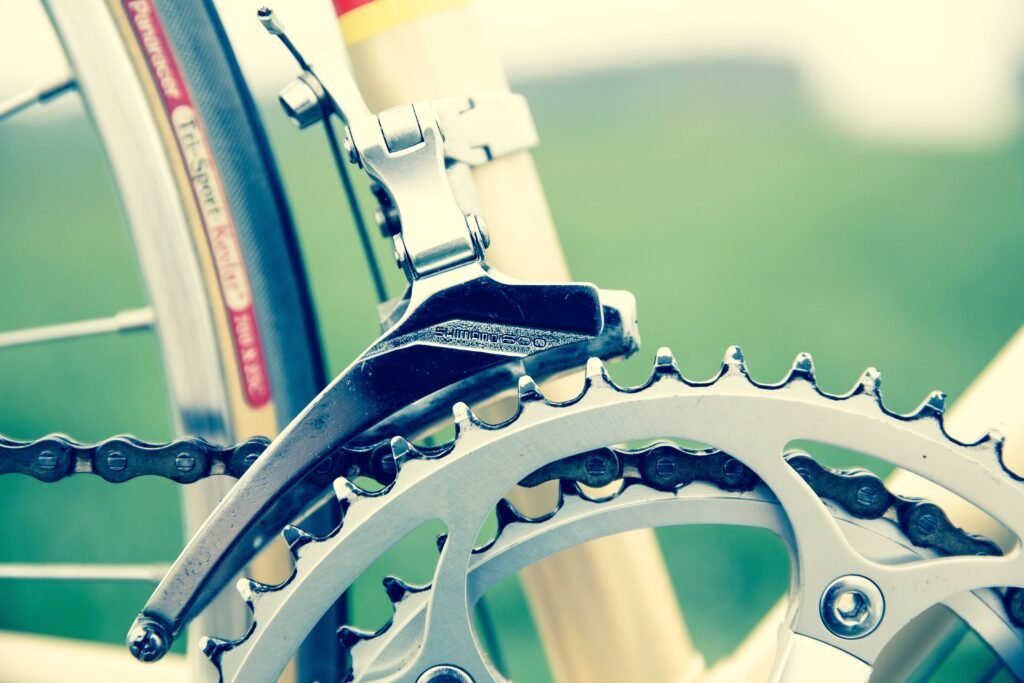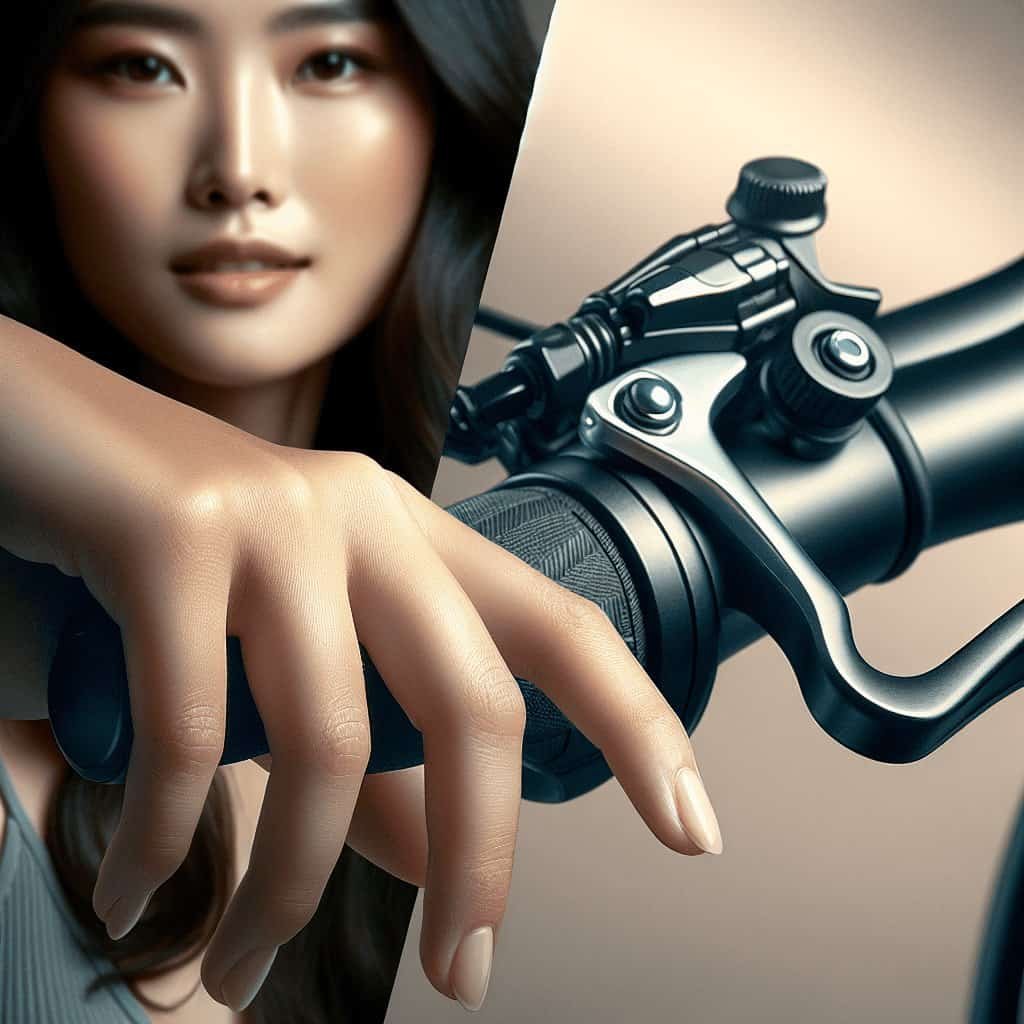So, you’ve just purchased yourself an electric bike and you’re enjoying the smooth and effortless ride it offers. But perhaps you feel like you need a bit more control over the braking system. Don’t worry, it’s a common concern and luckily, adjusting the sensitivity of the brakes on your electric bike is a simple task. In this article, we’ll walk you through the step-by-step process, ensuring that you can stop smoothly and confidently whenever you need to. Let’s get started!
Inspecting the Brake System
When it comes to maintaining the safety and functionality of your electric bike, one of the most important areas to focus on is the brake system. Regularly inspecting the brake system can help identify any potential issues and ensure that your brakes are in optimal condition. There are several key components of the brake system that you should pay attention to during your inspection.
Checking the Brake Pads
Start by checking the brake pads for wear and tear. Over time, brake pads can become worn down, reducing their effectiveness and compromising your ability to stop quickly and safely. Inspect the brake pads for any signs of uneven wear, excessive wear, or damage. If you notice that the brake pads are worn down to the indicated wear line or are significantly damaged, it’s time to replace them.
Examining the Brake Cables
Next, take a look at the brake cables. The brake cables connect the brake levers to the brake calipers and are responsible for transmitting the force from your fingers to the brakes. Make sure the cables are securely attached and not frayed or damaged. Any signs of wear or damage should be addressed immediately. Additionally, check if the cables are properly lubricated to ensure smooth operation.
Inspecting the Brake Calipers
Lastly, inspect the brake calipers. The brake calipers are responsible for squeezing the brake pads against the brake rotor or rim to create friction and slow down or stop the bike. Check the calipers for any signs of misalignment, such as one side being closer to the rotor or rim than the other. Misaligned calipers can result in uneven braking and reduced stopping power. Also, ensure that the calipers are properly tightened and the mounting bolts are secure.
Adjusting Brake Pad Clearance
Proper brake pad clearance is crucial for effective braking performance. Having too much or too little clearance between the brake pads and the rotor or rim can affect your ability to brake efficiently. Adjusting the brake pad clearance is a relatively simple process and can greatly enhance the overall performance of your brakes.
Loosening the Brake Pad Adjusting Nut
To adjust the brake pad clearance, you will first need to locate the brake pad adjusting nut. This nut is usually found near the brake caliper and is used to fine-tune the position of the brake pads. Use a wrench or an appropriate tool to loosen the brake pad adjusting nut. By loosening the nut, you will be able to move the brake pads closer or farther away from the rotor or rim.
Aligning the Brake Pads
Once you have loosened the brake pad adjusting nut, carefully align the brake pads so that they are evenly spaced on either side of the rotor or rim. You can do this by manually adjusting the position of the brake pads with your fingers. Make sure they are centered and not rubbing against the rotor or rim when the brake lever is not engaged.
Tightening the Brake Pad Adjusting Nut
After aligning the brake pads, tighten the brake pad adjusting nut back in place. Ensure that it is securely tightened but not overly tightened, as this can cause the brake pads to rub against the rotor or rim even when the brake lever is not engaged. Give the brake lever a few squeezes to confirm that the brake pad clearance is adjusted correctly.

Adjusting Brake Lever Reach
The reach of the brake lever refers to the distance between the brake lever and the handlebar. Adjusting the brake lever reach can help achieve a more comfortable and efficient braking experience for riders with different hand sizes or preferences.
Locating the Reach Adjustment Screw
To adjust the brake lever reach, you will need to locate the reach adjustment screw. This screw is typically found on the inner side of the brake lever. It allows you to change the angle and position of the brake lever to suit your hand’s natural resting position.
Turning the Reach Adjustment Screw Clockwise or Counterclockwise
Once you have located the reach adjustment screw, you can begin adjusting the brake lever reach. Turning the screw clockwise will bring the brake lever closer to the handlebar, while turning it counterclockwise will extend the reach. Experiment with different positions until you find the most comfortable reach for your hand size and riding style.
Testing the Brake Lever Reach
After making the necessary adjustments, test the brake lever reach by gripping the handlebar and engaging the brake lever. Ensure that you can comfortably reach and apply sufficient pressure to the brake lever without straining your hand or wrist. If needed, make further adjustments until you find the perfect reach that provides optimal control and comfort.
Adjusting Brake Lever Pull
The brake lever pull refers to the amount of force required to engage the brakes fully. Adjusting the brake lever pull can help ensure that the brakes respond promptly and provide the necessary stopping power without requiring excessive force from the rider.
Identifying the Brake Lever Pull Adjustment Knob
To adjust the brake lever pull, you will need to locate the brake lever pull adjustment knob. This knob is typically found near the brake lever and can be rotated to increase or decrease the brake lever pull.
Rotating the Pull Adjustment Knob
Once you have identified the brake lever pull adjustment knob, start by rotating it clockwise to increase the brake lever pull or counterclockwise to decrease it. Experiment with different settings to find the balance between a responsive braking experience and a comfortable amount of force required.
Testing the Brake Lever Pull
After adjusting the brake lever pull, it is important to test its functionality. Squeeze the brake lever with the adjusted pull and observe how the brakes respond. Ensure that the brake pads engage quickly and provide sufficient stopping power without feeling excessively stiff or loose. Make further adjustments if necessary until you achieve the desired brake lever pull.

Adjusting Brake Cable Tension
Proper brake cable tension is crucial for optimal braking performance. When the brake cable tension is too loose, it can result in a delayed or weak braking response. On the other hand, excessive tension can lead to the brakes being engaged even when the brake lever is released. Adjusting the brake cable tension can help achieve the ideal balance.
Locating the Barrel Adjuster
To adjust the brake cable tension, you will need to find the barrel adjuster. The barrel adjuster is typically located near the brake lever or on the brake caliper itself. It allows you to fine-tune the tension of the brake cable without requiring major adjustments.
Turning the Barrel Adjuster Clockwise or Counterclockwise
To increase the brake cable tension, turn the barrel adjuster clockwise. This will tighten the cable and reduce the slack. Conversely, turning the barrel adjuster counterclockwise will loosen the cable and increase the slack. Find the proper tension by making small adjustments and evaluating the brake lever response.
Testing the Brake Cable Tension
After adjusting the brake cable tension, it is essential to test its effectiveness. Squeeze the brake lever and observe how quickly and decisively the brakes engage. The brake pads should make immediate contact with the rotor or rim, allowing you to slow down or stop smoothly. If the tension does not feel adequate, make further adjustments until the desired brake cable tension is achieved.
Checking and Adjusting Brake Calipers
The brake calipers play a critical role in the braking system, ensuring that the brake pads are properly aligned and make optimal contact with the rotor or rim. Checking the position of the brake calipers and adjusting them if necessary can significantly improve the braking performance of your electric bike.
Checking the Position of the Brake Calipers
Start by examining the position of the brake calipers. Ensure they are centered over the rotor or rim and that the brake pads are aligned evenly on either side. Any noticeable misalignment may result in reduced braking efficiency and uneven pad wear.
Loosening the Mounting Bolts
If the brake calipers are misaligned, you will need to loosen the mounting bolts that secure them to the fork or frame. Use an appropriate tool, such as an Allen wrench, to loosen the bolts just enough to allow for adjustment.
Aligning the Brake Calipers
With the mounting bolts loose, gently adjust the position of the brake calipers to center them over the rotor or rim. While making these adjustments, ensure that the brake pads are not brushing against the rotor or rim. Once aligned, tighten the mounting bolts securely.

Determining the Brake Sensitivity
The sensitivity of your electric bike’s brakes refers to how quickly and responsively they engage when the brake lever is squeezed. Determining the brake sensitivity that suits your riding style and preferences is crucial for a comfortable and safe braking experience.
Testing the Brake Response
To determine the brake sensitivity of your electric bike, find a safe and open area to perform some test stops. Ride your bike at a moderate speed and gently apply the brakes to gauge their initial response. Take note of how quickly the brakes engage and whether there is any delay or inconsistency in their performance.
Analyzing the Brake Sensitivity
Based on your test stops, analyze the brake sensitivity. Determine whether the brakes engage too abruptly, making it difficult to apply gradual stopping power, or if they feel sluggish and take too long to respond. Finding the balance between immediate responsiveness and gradual control is essential for a comfortable and efficient braking experience.
Considering Personal Preferences
When adjusting the brake sensitivity, it is important to consider your own personal preferences as a rider. Some individuals may prefer a more aggressive sensitivity, while others may opt for a gentler engagement. Take into account factors such as riding conditions, terrain, and your comfort level to find the brake sensitivity that best suits you.
Fine-Tuning the Brake Sensitivity
Fine-tuning the brake sensitivity involves making adjustments to various components of the brake system to achieve the desired braking experience. By combining different adjustments, you can customize the brakes to meet your specific needs and preferences.
Adjusting the Brake Pad Clearance
To fine-tune the brake sensitivity, revisit the brake pad clearance adjustment. Make minor adjustments to bring the brake pads closer or farther away from the rotor or rim to achieve the desired initial contact and engagement. Remember to tighten the brake pad adjusting nut securely after making any adjustments.
Modifying the Brake Lever Reach
Consider revisiting the brake lever reach adjustment to fine-tune the overall braking experience. Experiment with different positions to find the reach that provides the ideal balance of comfort and control. Remember to test the brake lever reach after each adjustment to ensure optimal performance.
Checking the Brake Lever Pull
Lastly, check the brake lever pull and make any necessary fine-tuning adjustments to achieve the desired braking force. Small changes to the brake lever pull can affect the overall sensitivity and responsiveness of the brakes. Ensure that the pull is neither too loose nor too tight, making braking comfortable yet efficient.

Seeking Professional Assistance
Although adjusting the sensitivity of the brakes on your electric bike can be done by yourself, sometimes it may be necessary to seek professional assistance. If you are unsure about any aspect of adjusting the brake system or if you encounter persistent issues even after making adjustments, consulting an electric bike technician is advisable.
Consulting an Electric Bike Technician
An electric bike technician has the knowledge and expertise to properly diagnose and address any brake-related concerns. They can provide guidance on the appropriate adjustments and ensure that your brakes are calibrated correctly. Seeking the help of a professional can give you peace of mind knowing that your electric bike’s brakes are in top-notch condition.
Taking the Electric Bike to a Bike Shop
If you prefer a hands-off approach or if the brake adjustments are beyond your comfort level, taking your electric bike to a local bike shop is a viable option. The experienced technicians at bike shops can inspect and adjust the brakes for you, ensuring that they are optimized for performance and safety. This is especially recommended for complex brake systems or if you lack the necessary tools and expertise.
Maintenance and Safety Tips
To keep your electric bike’s brake system in excellent condition and ensure your safety while riding, regular maintenance and adherence to safety practices are essential. Here are some important tips to keep in mind:
Regularly Inspecting the Brake System
Make it a habit to inspect your electric bike’s brake system routinely. Check for any signs of wear, damage, or misalignment in the brake pads, cables, and calipers. Ensure that all components are clean, properly lubricated, and securely attached. Early detection of potential issues can prevent more significant problems down the line.
Keeping the Brake Components Clean
Maintaining clean brake components is crucial for optimal performance. Regularly wipe down the brake pads, calipers, and cables using a clean cloth to remove dirt, grime, and any debris that may impact their functionality. Use a mild cleaning solution if necessary, but avoid applying lubricants to the braking surfaces.
Wearing Appropriate Safety Gear
When riding your electric bike, always prioritize safety by wearing appropriate gear. Invest in a quality helmet, gloves, and reflective clothing to enhance your visibility and protect yourself in case of an accident. Remember that the brake system can only do its job effectively when paired with responsible and cautious riding practices.
By following these guidelines, you can adjust the sensitivity of the brakes on your electric bike, ensuring optimal performance and maximizing your overall biking experience. Remember to regularly inspect and maintain your brake system, as well as prioritize safety while enjoying the thrill of riding your electric bike.


